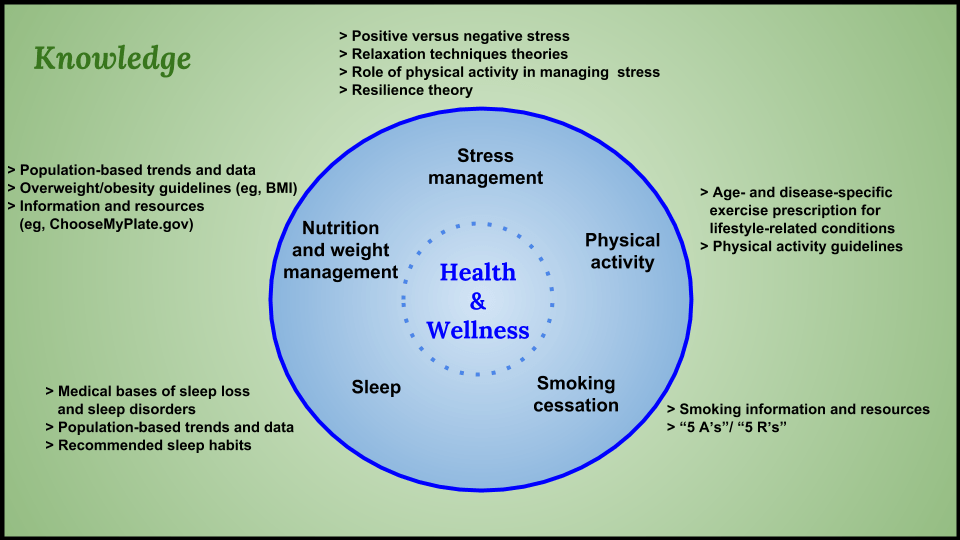You put a great deal of effort into your practice. You apply the best of your knowledge and put every relevant skill to use. It is natural to feel frustrated when your patient comes back with the same issues, or even new ones, year after year.
We are complex creatures endowed with the amazing ability to recover from injury and heal. So why is it difficult for many people to remain healthy and well?
[Go here for How a Physical Therapist Can Promote Health and Wellness Part 2]
Lifestyle Choices and the Cycle of Pain
Lifestyle-related conditions (also called non-communicable disease) such as diabetes, cancer, arthritis, respiratory disease, and heart disease, are the leading causes of death and disability in America. These chronic conditions are our healthcare system’s greatest burden, with more than 2 trillion dollars spent annually to treat nearly half of the US population(1). In most cases, these conditions are linked to two main behaviors:

Pain is both the warning signal and the common link between most chronic diseases
Poor eating habits, sedentarism, excessive alcohol consumption, and smoking are all risk factors for development of chronic disease. Because these are all modifiable behaviors, chronic disease and the pain associated with them is largely preventable.
What can physical therapists do to promote long-term change in behavior and pain?
Quite a bit, actually.
The First Physical Therapy Summit on Global Health: implications and recommendations for the 21st-century research report regards physical therapy as the “quintessential established noninvasive health profession”, which has “a leading role in preventing, reversing, as well as managing lifestyle-related conditions” (2).
In a recent article published in Physical Therapy, professor Janet Bezner, PT, DPT, Ph.D. addresses the knowledge and skills required by physical therapists to effectively promote Health and Wellness in their practice. Dr. Bezner also sheds light on the opportunities and barriers that are often encountered when trying to accomplish this goal; in her words, “Physical therapists can reduce risk factors and prevent and treat NCDs by providing patient and client education; prescribing physical activity and exercise; and performing noninvasive, hands-on interventions consistent with a biopsychosocial paradigm.” (3)
Better Together – Health and Wellness
Since health and wellness are interrelated, people often think of them as synonymous. There are, however, concrete and subtle differences between these two terms:
- Health: “A state of complete physical, mental, and social well-being and not merely the absence of disease.” (4)
- Wellness: “The sense that one is living in a manner that permits the experience of consistent, balanced growth in the physical, spiritual, emotional, intellectual, social, and psychological dimensions of human existence.” (5, 6)
While both definitions are multidimensional and intersect in their scope, only the term ‘health’ precludes physiological alterations in bodily and mental function related to disease states. This means that wellness may be attained even by sick people if the disease is adequately managed and controlled. As physical therapists know very well, it is common for perfectly healthy people to feel unwell. Stress, either physical (due to overexertion or inactivity) or psychological (poor sleep, anxiety, depression) is a key obstacle that even ‘healthy’ people must learn to manage.
“The important take-home message for physical therapists and other healthcare providers is that both health and wellness encompass more than physical health, and efforts that focus primarily on physical health (eg, physical activity, weight management, nutrition), although important, fail to recognize the influence of the other dimensions to overall well-being”. (3)
Dr. Tatta’s simple and effective pain assessment tools. Quickly and easily assess pain so you can develop actionable solutions in less time.
Health and Wellness for Physical Therapists
Health promotion refers to “the process of enabling people to increase control over, and to improve, their health. The concept of health promotion moves beyond a focus on individual behavior, toward a wide range of social and environmental interventions.”(7)
The figure below summarizes the evidence base for 5 key behaviors that should be promoted by physical therapists in order to encourage patients’ health and wellness awareness(3).

As well as understanding these behaviors and learning the skills needed to modify them (the topic of our next blog!), practitioners must understand their patients’ motivation and readiness to change in order to achieve long-lasting, positive results.
E pluribus unum
The first step to improving your practice is realizing that health and wellness can be holistically addressed in ‘chronic’ patients with timely intervention. Dr. Ian R. McWhinney, known as Canada’s “Founding Father of Family Medicine” famously said:
“Healing in its deepest sense [is] the restoration of wholeness.”(8)
May this simple, yet powerful statement serve as a reminder of the goal we seek to achieve at work every day.
Click here to learn how to use nutrition to treat chronic pain!
REFERENCES:
1- National Center for Chronic Disease Prevention and Health Promotion https://www.cdc.gov/chronicdisease/index.htm
2- Dean, E. et al. (2011) The First Physical Therapy Summit on Global Health: implications and recommendations for the 21st century. Physiother Theory Pract. 27(8):531-547.
3- Bezner, J.R. (2015) Promoting Health and Wellness: Implications for Physical Therapist Practice. Physical Therapy 95 (10):1433–1444.
4- Preamble to the Constitution of the World Health Organization as adopted by the International Health Conference, New York, 19-22 June, 1946; signed on 22 July 1946 by the representatives of 61 States (Official Records of the World Health Organization, no. 2, p. 100) and entered into force on 7 April 1948.
5- Adams, T., Bezner, J., Steinhardt, M. (1997) The conceptualization and measurement of perceived wellness: integrating balance across and within dimensions. Am J Health Promot. 11:208–218.
6- Adams, T.B, Bezner, J.R, Drabbs, M.E, et al. (2000) Conceptualization and measurement of the spiritual and psychological dimensions of wellness in a college population. J Am Coll Health. 48:165–173.
7- World Health Organization website. http://www.who.int/topics/health_promotion/en/.
8- McWhinney, I.R (1986) Are we on the brink of a major transformation of clinical method? Can Med Assoc J. 135:873-878.



